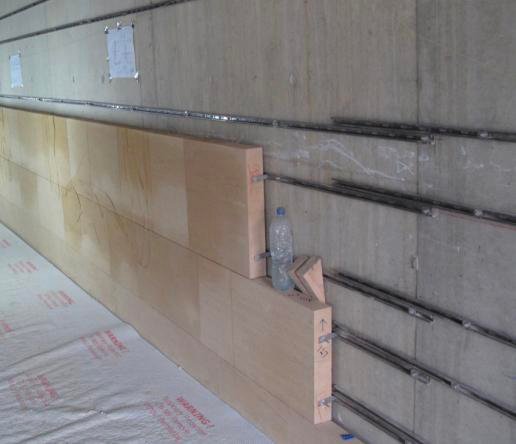The revised version of BS 8298: Code of Practice for the Design & Installation of Natural Stone Cladding & Lining, has met with general agreement it is an improvement on the standard as it stood since its 2010 revision.
It has been one of the most useful standards for natural stone since it was first developed in 1989 from a Stone Federation Great Britain code of practice – and Stone Federation members are among those who have been involved in the latest changes.
The 2010 revision broke the one standard into what was intended to be five parts, although part five on internal cladding was never produced.
The standard has now been cut back to three parts, parts 2, 3 & 4, covering, respectively, hand setting, stone on precast, and rainscreens. Part one, which covered general principles, has been incorporated into each of the other parts.
The standard as it was could be considered ambiguous about certain aspects of the work, but the revisions aim to clarify all aspects, including sample sizes of cladding to test and frequency of testing.
Stone consultant Peter Harrison, one of the Stone Federation members on the committee revising the standard, said these changes were necessary because designers are “using thinner and thinner panels in larger and larger format”.
With continuing developments in cladding practice, notably for part 4 (rainscreens), and the changing requirements brought about as a result, this latest update was, perhaps, overdue by the time it arrived on 17 December.
The revised edition is both more proscriptive and more useful in ensuring stone used will perform as expected and required, with a table to show how factors of safety should be assessed for thicknesses and sizes of panels used. There are also more explanatory diagrams with more detail that are easier to understand.
The result is that desirable mixture of making sure stone is being used properly without putting clients off using it at all.
It should offer greater opportunity for more flexibility in the design of stone cladding as well as a greater comfort factor in knowing that the stone is being used safely.
The standard makes provision for more testing, including production control testing to ensure the stone actually being used lives up to the quality promised. And it requires the structural engineer and architect to set out the functional requirements governing the design principles, including maximum movement allowances, and agree them with those selecting and designing the cladding and its fixings at an early stage in the design process.
The standard is a code of practice and does not have to be used, but it is like insurance: the potential consequences of not using it are scary if anything does go wrong.
The revisions should make the roles of designers and engineers, materials suppliers and contractors and specialist sub-contractors clearer, although for major specialist stone contractors already working to the highest standards the changes should make little difference.
It is at the next level of contracting where the greatest benefits are likely to occur, and BS 8298 might now help clients and architects to understand why they would be well advised to resist the temptation to employ cut-price stone suppliers and contractors.
The suite of standards set out guidance for the testing required, the sampling regimes to be followed, working practices in production and on site, and the provision of the Declaration of Performance and UKCA Marking (which has replaced the European CE Mark, although the CE Mark remains acceptable until the end of this year and for now, at least, the requirements for CA marking are exactly the same as for CE marking).
Michael Poultney, the Managing Director of Portland limestone mining company Albion Stone, who was one of the Stone Federation members involved in the revisions to the standard, says: “This standard sets out very clearly how, when needed, the production control testing should take place and how and when the samples should be selected.
“The important point was to ensure all potentially suitable and maybe new stones can be used, but there needs to be certainty that the stones are suitable, and detailed current and reliable technical data are available.
“There was also a lot – in fact, one hell of a lot – of discussion about the Factor of Safety. We now have a detailed and relatively straight forward method to calculate the Partial Load Factor (Factor of Safety) that leads into the amended calculations for the thickness [of stone that can be used]. In the annex are example calculations, which I think will be very helpful.
“Overall, the standard has taken a long time and a tremendous amount of effort from a large team... but we have a document with no loose ends.”
Following the 2010 revisions to the standard, Stone Federation published a user guide to BS 8298. That has now been withdrawn.
Stone Federation told its members: “The Stone Federation BS 8298 User Guide was created as the 2010 Standard was felt to be difficult to navigate. However, the 2020 update has rectified this issue and therefore removed the need for a simplified user guide.”
Stone Federation has negotiated a 10% discount on BSI publications for its members.

